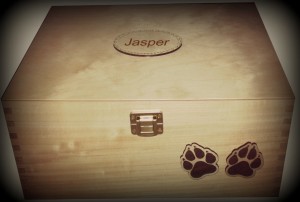 To say that Daisy and I were close is a bit of an understatement. Although my first word was “Mom,” my second was “Daisy,” and my first sentence was “Where did Daisy go?” She was my constant, patient companion as I grew old enough to chase her around the yard and pull her ears. Looking back at family photos, I’m always shocked to realize she was only a 20 pound, fluffy Cockapoo. To me, Daisy was huge, big enough protect me from the monsters under the bed and the scary clowns in the closet.
To say that Daisy and I were close is a bit of an understatement. Although my first word was “Mom,” my second was “Daisy,” and my first sentence was “Where did Daisy go?” She was my constant, patient companion as I grew old enough to chase her around the yard and pull her ears. Looking back at family photos, I’m always shocked to realize she was only a 20 pound, fluffy Cockapoo. To me, Daisy was huge, big enough protect me from the monsters under the bed and the scary clowns in the closet.
I was four years old when Daisy developed chronic heart failure and my parents made the decision to euthanize her. At the time, I didn’t understand what was going on; all I knew was Daisy went to the vet and hadn’t returned. I had never experienced grief or loss. I didn’t know how to say goodbye to my friend. For several days, I wandered the house in a confused fog, retreating quietly into my own world. Then one day, my mom came home with an empty wooden box, and together, we made a memory box for Daisy.
First, I painted the box with pictures: Daisy with our family, Daisy playing fetch, Daisy with her favorite stuffed animal. Mom and I went through our pictures of Daisy and wrote down our favorite Daisy stories. Some stories made us laugh, but then Mom started to cry, which I had never seen before. At first I was surprised, but I quickly realized that she was grieving too. Seeing her express her emotions gave me permission to do the same. We chose our favorite photos and placed them in our memory box, along with the stories we had written, Daisy’s collar, and a few of her toys. Putting these objects in the box helped me understand that Daisy wasn’t going to come back, but that she would always be with me in the memories my box held.
Following the death of a pet, children’s grief may manifest in a number of ways. A child may become withdrawn and quiet, the way I did following Daisy’s death. Alternatively, he or she may become over attentive, clingy, or act out more often than usual. Some children manifest grief as physical symptoms and change their eating or sleeping patterns. There is no wrong way to grieve, but children often don’t know how to work through or express their grief. I believe that art and creative writing are valuable tools to help children process the loss of a pet and can help parents open a discussion with their child about death. Drawing pictures of the pet, writing down the pet’s life story, or creating a poem about a favorite experience are all good ways to explore memories. When my young cousin recently lost a pet, he wrote a heartfelt letter to his dog, saying goodbye and describing the things he would miss most about her. Children may also feel fear and anxiety following the death of a pet, and having them draw or write about their fears may be a good way to open a discussion. An alternative to a memory box may be to plant a tree or flower in your yard where the child can go to remember your pet. Often the loss of a pet is a child’s first encounter with death, and it can be a painful experience. Allowing children to grieve in their own way and helping them express their emotions can help during this difficult time.
This article was written by Katie Anderson, Client Support Specialist at MN Pets
